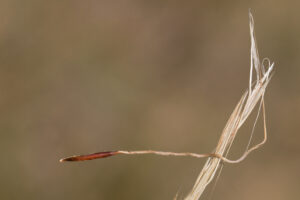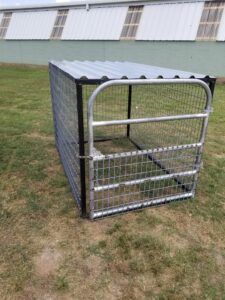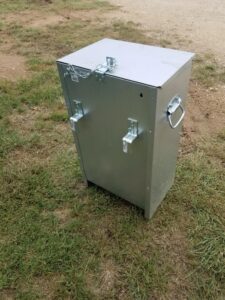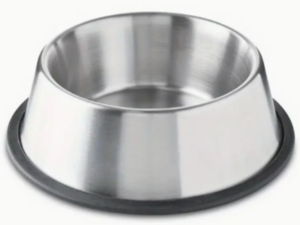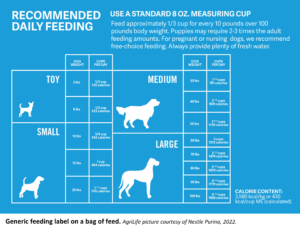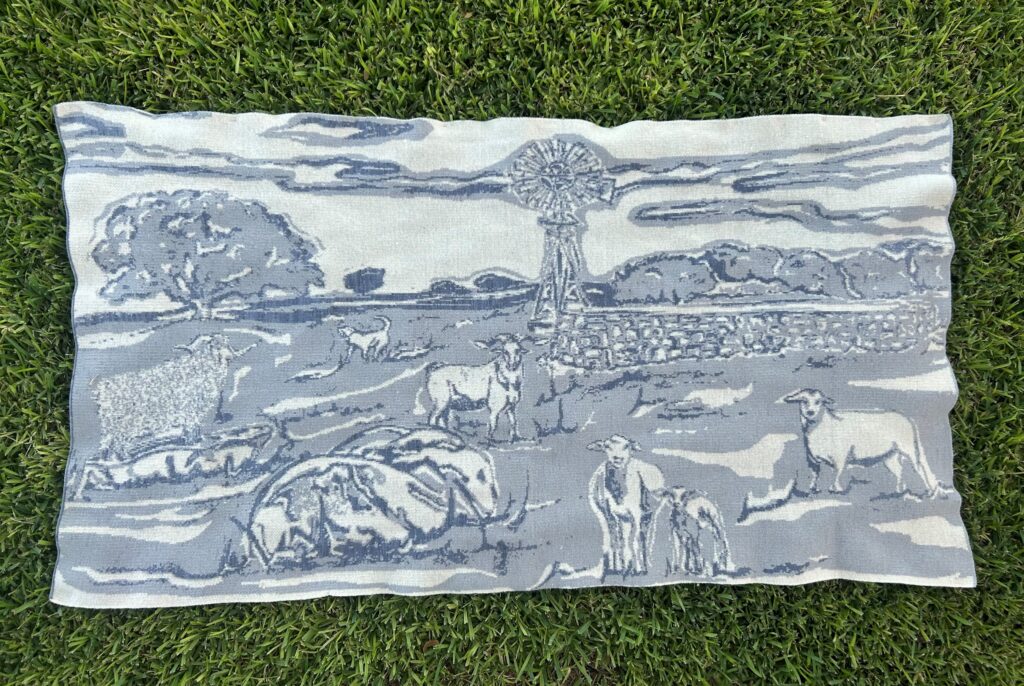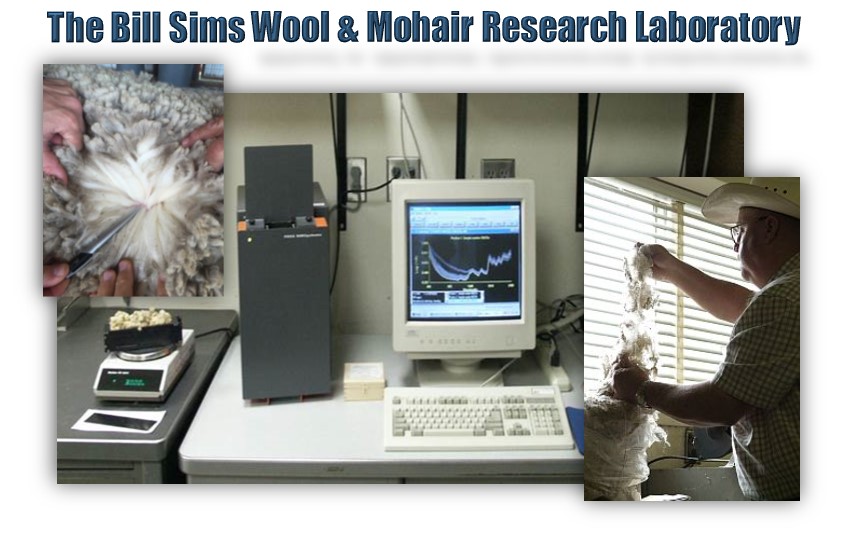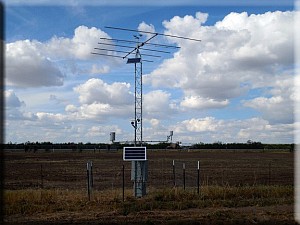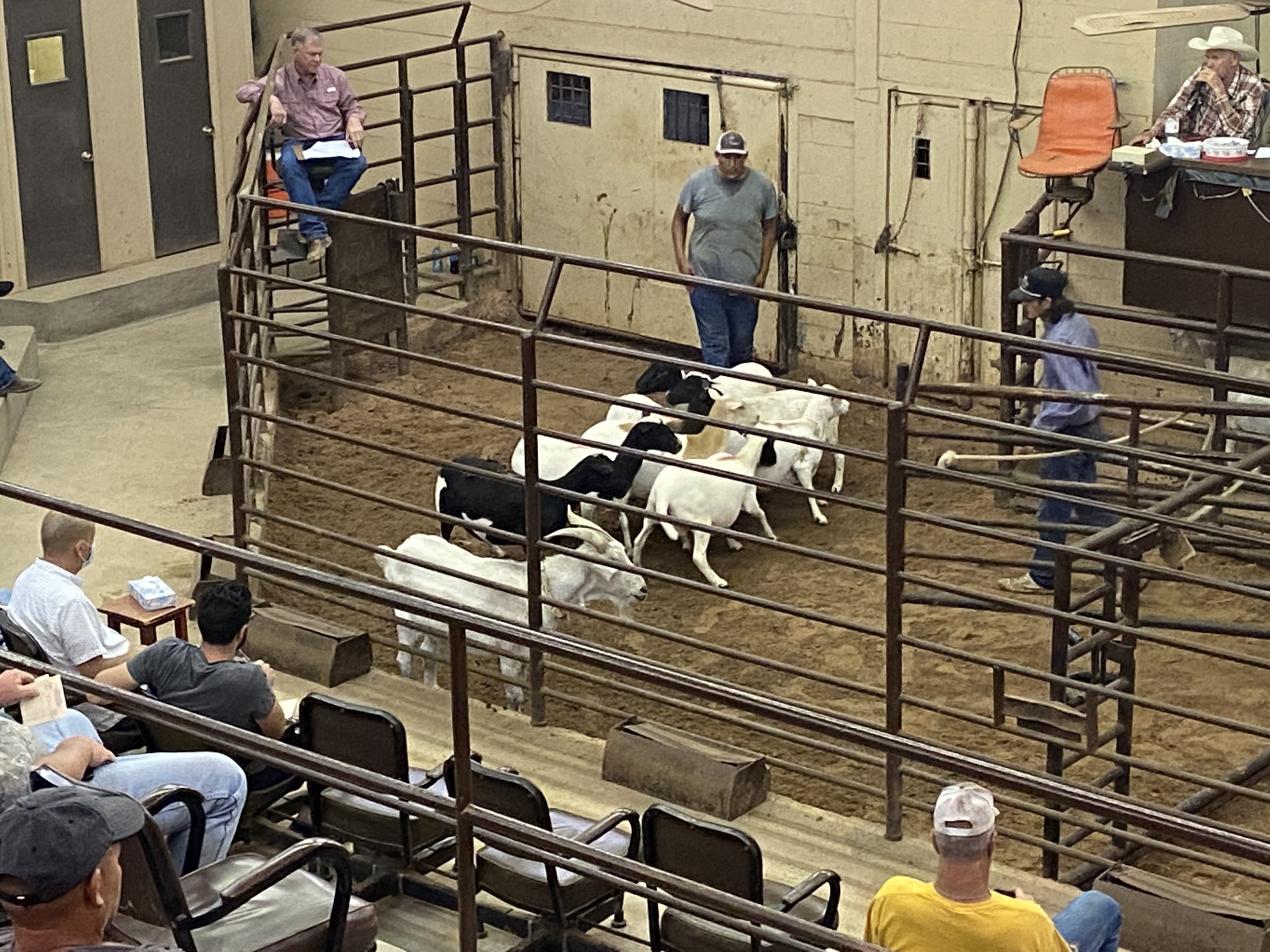The weather is slowly getting warmer across the state. Rain levels appear to be lower than normal, indicating a drought in the region. Blue Bonnets and Indian Paintbrush are out in pastures again this year, but not in the abundance of previous years, which could be another indication of lower rainfall across the state. The long-range forecast for May shows average rainfall potential, but lower-than-average rainfall is predicted for most of the state this summer in the extended forecast. The forecast also indicates higher-than-average temperatures from May through the summer months.
Make plans now to groom your long-haired LGDs well before the summer heat arrives. Heat stroke can be a significant issue for dogs with matted coats and long hair. Ensure you have plenty of hydration fluids for your dogs in case they experience heat stroke, as it can be fatal. Additionally, with less-than-average rainfall, Speargrass seeds will likely drop by the time this month’s edition is published. The seeds can cause various skin issues in dogs.
AgriLife Livestock Guardian Dog Program: Update and Events
On May 2nd, we hosted the 9th Annual AgriLife LGD Field Day at the AgriLife Center in San Angelo. The event featured workshops, a producer panel, and a tour of the LGD facilities at the Center. Presenters included Dr. John Tomecek, AgriLife Wildlife Specialist, and Dr. Walter Burghardt, a canine behaviorist. Vendors and dog breeders were also present.
We want to thank the following field day sponsors for their valuable support in making this year’s event a success. Without their support, the event would not have been as successful.
Platinum Sponsors – Lone Star Tracking, Los Caballos Vet Clinic, Nestle – Purina, Sheep & Goat Predator Board, Spot On Fence, USDA – NASS
Gold Sponsors – Diamond Pet Foods, Noble Research Institute, Tom Green County Farm Bureau
Silver Sponsors – Angelo Pellets, Capital Farm Credit, First State Bank of Paint Rock, Gun Dog Supply, Regal Oil, Palmer Feed, Producers Livestock Auction, Trans Texas Southwest Credit Union, Twin Mountain Fence, West Texas Steel
Commercial Exhibitors – Central Farm Credit, ENVU, Renewal By Anderson, Texas LGD Association, Tom Green County Farm Bureau
LGD Breeders – Finder Maremmas, Glen Enterprises, Pfeuffer Ranch, Stoffels Family Farm, WW Livestock Dogs
Feeding LGDs
This month, we will finish a two-part series on feeding an LGD. Last month, we discussed nutrition, health, and commercial vs. raw feed for dogs. This month, we will look at ways to feed your LGD and how much they should be fed. For more information and to learn about our feeding stations and improved self-feeders, please contact us at the AgriLife Center in San Angelo.
How to Feed an LGD.
For most large producers, a feeding station is the best option for their livestock guardian dogs (LGDs), as it allows all dogs to eat when
hungry. Placing a feeding station at every water source is best so the LGDs do not have to leave the livestock to feed. Livestock will go to water at least every other day, allowing the LGDs to eat simultaneously. We have made several improvements to self-feeders to make them sturdier and more straightforward to mount in a station. It is also essential to provide a latch on the top to prevent varmints from opening the lid. We recommend using a jump gate of some design for an LGD to enter the feeding station. Gates that do not allow a dog to jump into a station frequently have large holes dug by the gate, which eventually allow feral hogs and livestock to enter, wasting dog food unless the station is regularly relocated.
If choosing to hand-feed the LGDs, a producer will want huge, durable dog bowls. We recommend stainless steel bowls with a sloped side, so they are not easily tipped over. Hand feeding may be a better option for smaller producers as it keeps the dogs socialized and allows them to check for body condition scores daily. For older dogs with joint pain, a raised bowl may be easier for them to eat out of and maintain their body condition score.
How Often Should an LGD Be Fed?
If hand feeding, we recommend feeding adults once a day and young puppies three times a day. We move weaned puppies over to self-feeders as soon as possible to decrease the workload and acclimate them to what they will use on our ranches. Producers using self-feeders should regularly monitor their LGD feeders for adequate levels. We check our self-feeders at least three times a week.
It is essential only to fill a self-feeder with enough kibble until you plan to return. This keeps the feed fresh in the warmer months and does not supply varmints with substantial amounts of feed. It is best to check with the dog’s breeder and a vet to ensure proper feed for a specific LGD. Again, using the dog’s body condition score is the easiest way to ensure they consume enough kibble. Improper feeding can lead to health issues and resource guarding of feed. Neither is good for an LGD or the bottom line!
How Much Should an LGD Be Fed?
The amount to feed an LGD will depend on its age, weight, and activity level. We recommend following the recommendation on the dog food bag and double-checking with a vet. It is best to calculate the amount of kibble based on the caloric content of the food being fed and the dog’s activity level, weight, and age. However, this can be a time-consuming process if the feed changes regularly.
Also, it is important to remember that dog food is measured in cups. While a cup is 8 ounces, due to the pore space of the kibble, a regular measuring cup contains approximately 5 ounces of kibble. It is essential to adjust the feeding amount for that variance. Intact females in the latter half of pregnancy and lactating dogs will need more kibble than the rest of the pack. Injured, ill, and older dogs often have different food requirements. Be sure to check with a vet for the correct feed for an LGD. Puppies must also be on full feed until they are at least a year old, as LGD mature slowly. As always, refer to a veterinarian for a recommendation on appropriate amounts of feed.
Bonding Project Update
Round Six
Dasher has undergone retraining for killing lambs at his producer’s ranch. We placed him wearing a shock collar in a field with lambing ewes. We observed him daily, and every time a ewe lambed and he came near the lambs, we shocked him. This training lasted for two weeks, after which we returned him to the producer. Hopefully, this has cured him of killing newborn lambs.
Lulu and Comet are still doing well in Mc Camey and are no longer leaving the ranch. Lady is also doing well in Ozona and is staying close to her sheep. Blitzen is still at the Center, guarding goats that will go back to Menard when they are done kidding. Lilly went out to the Read Ranch in Ozona last month to guard some sheep.
Round Seven
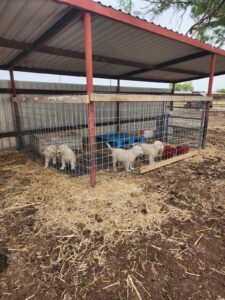
The “D pups” in their temporary safe pen inside the cattle bonding pen. AgriLife photo courtesy of Sustaita 2025
The “D pups” (Duke, Dozer, Delta, and Diesel) are all doing well. They went into their bonding pens in mid-April with several light-weight weaned calves on loan from Sul Ross University for this project. The pups were temporarily housed in a joint pen with the calves while we completed the other pen area. The pups are in bonding pens with hot wire at the base and will stay in the pens until they are 6 months old. At that time, they will be placed into 100-acre training pastures with the calves.
We were concerned that the pups might get injured, so we have created an enclosure for them near the cattle’s feeding area. This allows the pups to receive exposure to the calves while remaining safe until they are 3 months old. At that time, we will enable them to leave the enclosure area, but keep it open in case the calves bully them. We are socializing the dogs three to four days a week and giving them leash and tether training, along with vehicle rides, each week.
In closing
If you enjoyed this monthly LGD blog, please remember to subscribe using this link: The Guardian Way | Texas A&M AgriLife Research and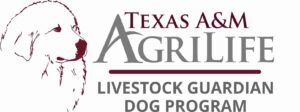 Extension Center at San Angelo.
Extension Center at San Angelo.
If you have any feedback about this article or would like to propose topics for future articles, webinars, or workshops, please contact me at bill.costanzo@ag.tamu.edu or 325-657-7311.
If you are seeking information on LGDs, please visit our website, which features factsheets, global research on LGDs, and case studies we have conducted.
The Texas A&M AgriLife Livestock Guardian Dog Program is a collaborative initiative between Texas A&M AgriLife and the Texas Sheep and Goat Predator Management Board. Follow us on our social media platforms and share them with your friends and family!
Facebook, Instagram, YouTube: @TAMUlivestockguarddog
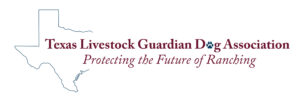 Remember to check out the Texas LGD Association online! You can follow the organization on Facebook or YouTube under @TexasLGDAssociation or visit its website.
Remember to check out the Texas LGD Association online! You can follow the organization on Facebook or YouTube under @TexasLGDAssociation or visit its website.

